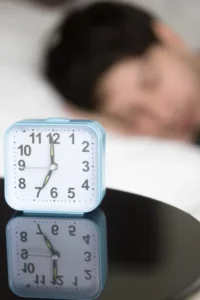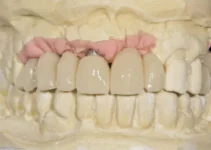Sleep apnoea score is a critical tool used by healthcare professionals to quantify the severity of sleep apnoea in individuals. This score is typically derived from a sleep study, also known as polysomnography, during which various physical and physiological parameters are recorded while the patient sleeps. These include breathing patterns, oxygen levels in the blood, heart rates, and brain activity. A higher sleep apnoea score indicates more severe disruptions in breathing, which can significantly impact one’s overall health and quality of life. Understanding this score can help patients and doctors alike to better manage and treat sleep apnoea, leading to improved sleep quality and reduced health risks.
What is a Sleep Apnoea Score?
A Sleep Apnoea Score is a quantitative measure used to evaluate the severity of sleep apnoea in individuals. This score helps medical professionals to diagnose the presence and extent of sleep apnoea, which can significantly impact a person’s overall health. By understanding a patient’s Sleep Apnoea Score, healthcare providers can create effective treatment plans to manage the condition.
The score is derived from various parameters collected during a sleep study or polysomnography, which tracks multiple physiological signs while a person is asleep. These parameters often include the number of apnoea events (complete pauses in breathing) and hypopnoea events (partial reductions in breathing), oxygen saturation levels, and sleep fragmentation.
With sleep apnoea being a condition that affects millions worldwide, having a standardized scoring system is crucial for assessing its severity and implementing timely interventions. The Sleep Apnoea Score thus plays a pivotal role in advancing the treatment and management of this widespread sleep disorder.
Definition of Sleep Apnoea Score
The Sleep Apnoea Score is primarily based on the Apnoea-Hypopnoea Index (AHI) or the Respiratory Disturbance Index (RDI). The AHI measures the total number of apnoea and hypopnoea events per hour of sleep. In contrast, the RDI includes other forms of respiratory disturbances in addition to apnoeas and hypopnoeas.
According to the American Academy of Sleep Medicine, the severity of sleep apnoea can be classified as follows using the AHI:
- Mild: 5–15 events per hour
- Moderate: 15–30 events per hour
- Severe: more than 30 events per hour
These classifications help in determining the appropriate treatment strategy for each patient.
Additionally, other scoring systems and indices may be used in specific cases, especially when additional respiratory parameters need to be evaluated. These may include oxygen desaturation indices and measurements of sleep quality.
How the Score is Calculated
The process of calculating the Sleep Apnoea Score involves conducting a detailed polysomnography study, which is an overnight test that records various physiological parameters while a person sleeps. The primary components considered in the calculation are:
- The total number of apnoea events (complete cessations of breathing).
- The total number of hypopnoea events (partial obstructions in breathing).
- The duration of these events.
- Levels of oxygen desaturation.
Using these data points, the AHI or RDI is calculated by dividing the total number of events by the total hours of sleep.
Other factors, such as sleep stages and arousal index (number of times a person wakes up), may also be considered to provide a comprehensive picture of a patient’s sleep apnoea severity. In some cases, additional home sleep tests might be used to gather complementary data.
The calculated score is then used to determine the severity of the condition and guide treatment options. This could range from lifestyle modifications and continuous positive airway pressure (CPAP) therapy to surgical interventions in more severe cases.
Different Types of Sleep Apnoea Scores
While the AHI and RDI are the most commonly used metrics for scoring sleep apnoea, there are other indices and scores that can provide additional insights into a patient’s condition. For example, the Oxygen Desaturation Index (ODI) measures the number of times per hour that a person’s blood oxygen level drops by a certain degree from baseline, offering another perspective on the severity of sleep apnoea.
The Epworth Sleepiness Scale (ESS) is another tool that, although not a direct measure of apnoea severity, assesses daytime sleepiness which can be a significant indicator of sleep apnoea. Patients rate their likelihood of dozing off in various situations, and the resulting score can help gauge the impact of sleep apnoea on daily life.
Additionally, there are specialized scores for particular demographics or associated conditions. For example, the Paediatric Sleep Apnoea Score may include different parameters tailored to children’s sleep patterns and physiology.
Understanding these different types of scores and how they are utilized can provide a more nuanced approach to diagnosing and treating sleep apnoea, ensuring that patients receive the most effective care tailored to their specific needs. If you found this article informative, be sure to check out our other articles to deepen your understanding of sleep disorders and their management.
Importance of Sleep Apnoea Score in Diagnosing Sleep Disorders
Sleep apnoea is a common but often underdiagnosed condition characterized by repeated interruptions in breathing during sleep. Recognizing the importance of Sleep Apnoea Score in diagnosing sleep disorders is crucial for effective treatment and improved patient outcomes. This score helps categorize the severity of sleep apnoea based on the frequency of apnoea and hypopnoea episodes per hour of sleep.
By utilizing the Sleep Apnoea Score, healthcare providers can better identify patients who are at risk of complications related to untreated sleep disorders. This score serves as a key metric in both initial assessments and ongoing management of sleep apnoea, facilitating more targeted interventions. Failure to address sleep apnoea can lead to serious health consequences, making early and accurate diagnosis imperative. The Sleep Apnoea Score is not only useful for initial diagnosis but also for monitoring the effectiveness of treatments. Continuous assessment through this scoring system allows for adjustments in therapy, ensuring that patients receive the most appropriate care for their condition.
Early Detection of Sleep Apnoea
Early detection of sleep apnoea can significantly improve long-term health outcomes. The Sleep Apnoea Score plays a pivotal role in this process by providing a quantifiable measure of the severity of the disorder. Research indicates that early intervention can prevent the progression of sleep apnoea and reduce the risk of associated health complications.
Patients with higher Sleep Apnoea Scores are more likely to experience daytime fatigue, impaired cognitive function, and increased risk of cardiovascular diseases. Identifying these patients early allows for timely treatment, which can include lifestyle changes, the use of continuous positive airway pressure (CPAP) devices, or surgical interventions.
Moreover, early detection can lead to better patient education and awareness. Patients who understand the implications of their Sleep Apnoea Score are more likely to adhere to prescribed treatments and make necessary lifestyle adjustments.
Risk Assessment and Management
The Sleep Apnoea Score is an essential tool for assessing the risk levels of patients with sleep apnoea. This score helps clinicians determine which patients are at higher risk of developing severe complications and tailor their treatment plans accordingly. Higher scores often indicate a need for more aggressive therapy and closer monitoring.
Effective management of sleep apnoea involves a comprehensive approach that may include several strategies:
- Lifestyle modifications, such as weight loss and avoidance of alcohol and sedatives.
- Use of CPAP or BiPAP devices to maintain airway patency during sleep.
- Surgical options for patients with structural abnormalities contributing to their apnoea.
Regular follow-up and reassessment using the Sleep Apnoea Score ensure that treatment remains effective and that any necessary adjustments are made promptly. This continual evaluation is key to managing the condition effectively.
Correlation with Other Health Issues
There is a strong correlation between sleep apnoea and various other health issues. Conditions such as hypertension, diabetes, and heart disease are often exacerbated by untreated sleep apnoea. The Sleep Apnoea Score helps in identifying patients who are at increased risk of these comorbidities.
Higher Sleep Apnoea Scores have been linked to increased incidences of metabolic syndrome, a cluster of conditions that elevate the risk of heart disease, stroke, and diabetes. Treating sleep apnoea can thus have a profound impact on a patient’s overall health, potentially reducing the severity and incidence of these related conditions.
Furthermore, untreated sleep apnoea can lead to a decreased quality of life, marked by persistently low energy levels, mood disturbances, and poor mental health. Recognizing the importance of the Sleep Apnoea Score in diagnosis and treatment can help mitigate these negative outcomes.
Understanding the multifaceted impact of sleep apnoea on health underscores the importance of accurate diagnosis and effective management. For more detailed information on related topics, consider exploring our other informative articles.
How to Improve Your Sleep Apnoea Score
Sleep apnoea is a serious condition where breathing repeatedly stops and starts during sleep. Addressing this condition not only improves your sleep quality but also your overall health. There are several ways to improve your sleep apnoea score, ranging from lifestyle changes to medical interventions. Understanding and implementing these strategies can significantly alter your well-being.
Improving your sleep apnoea score involves a multifaceted approach. While this condition can be managed effectively, it often requires a combination of different strategies tailored to individual needs. Here, we will explore various avenues through which you can enhance your sleep apnoea score.
Lifestyle Changes
One of the most effective ways to improve your sleep apnoea score is by making certain lifestyle changes. Reducing weight through diet and exercise can significantly lessen the severity of sleep apnoea. Studies have shown that even a modest weight loss can lead to a substantial improvement in symptoms.
In addition to weight loss, avoiding alcohol and sedatives before bedtime can also make a difference. These substances relax the muscles around your airway, making it more likely for them to collapse during sleep. Quitting smoking is another important lifestyle change, as smoking contributes to inflammation and fluid retention in the airway, worsening sleep apnoea.
Developing good sleep hygiene can further complement these lifestyle changes. This includes maintaining a regular sleep schedule, creating a comfortable sleeping environment, and avoiding heavy meals close to bedtime. All these factors collectively contribute to a better sleep apnoea score.
Medical Interventions
When lifestyle changes are not enough, medical interventions may be necessary. One common form of treatment is the use of a Continuous Positive Airway Pressure (CPAP) machine. This device keeps the airway open by providing a constant stream of air through a mask worn during sleep. CPAP machines have been proven to be highly effective in treating moderate to severe sleep apnoea.
For those who cannot tolerate CPAP, other options like oral appliances might be recommended. These devices reposition the jaw or tongue to keep the airway open. They are often custom-made by dentists and can be a suitable alternative for mild to moderate cases.
Surgical options also exist but are usually considered as a last resort. Procedures such as uvulopalatopharyngoplasty (UPPP) or maxillomandibular advancement (MMA) aim to remove excess tissue or reposition the jawbone to enlarge the airway. While effective, these surgeries carry potential risks and require careful consideration.
Continuous Monitoring
Improving your sleep apnoea score is not a one-time effort but requires continuous monitoring. Regular follow-ups with your healthcare provider can help track your progress and make necessary adjustments to your treatment plan. Adhering to prescribed interventions and consistently monitoring your symptoms is crucial for long-term success.
There are also various home monitoring devices available that can track sleep patterns, oxygen levels, and even heart rate. Using these devices can provide valuable insights into how well your current treatment plan is working and where adjustments might be needed.
Journaling your sleep experiences and symptoms can also be beneficial. Keeping a record of when you feel most rested or when symptoms seem to worsen can help identify patterns and triggers. Sharing this information with your healthcare provider can lead to more tailored and effective treatment plans.
By incorporating a combination of these strategies and maintaining a proactive approach, you can significantly improve your sleep apnoea score. For more insights on topics related to sleep health, be sure to read our other articles.
Common Questions About Sleep Apnoea Score
The Sleep Apnoea Score is a crucial metric used in diagnosing sleep disorders such as sleep apnoea. Here’s a frequently asked question to help understand it better.
What is a sleep apnoea score and how is it calculated?
The sleep apnoea score, often referred to as the Apnea-Hypopnea Index (AHI), measures the number of apnea and hypopnea events a person experiences per hour of sleep. It is calculated by monitoring a patient overnight and recording the total number of complete pauses (apnea) and partial reductions (hypopnea) in breathing that last for at least 10 seconds. An AHI below 5 is considered normal, 5-15 mild, 15-30 moderate, and above 30 severe sleep apnoea.

My name is Salman Kapa, a 73-year-old expert in bone regeneration and dental implantology. With decades of experience in the field, I am dedicated to advancing our understanding of oral health and hygiene. Through my research and writing, I aim to contribute to the development of innovative solutions in dental care.




